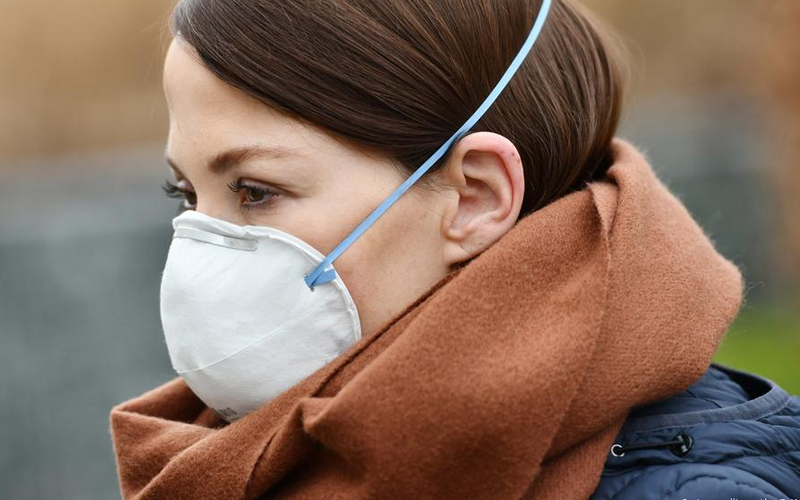But, the same type of infection, decreased, compared to the same period last year by almost 48, when the share was 139.24%, the National Agency for Public Health (ANSP) announces in an informative note sent to the Health INFO .
According to the information, ANSP specialists perform routine and sentinel epidemiological surveillance of influenza, acute upper respiratory tract infections (IARS) and severe acute respiratory infections (SARI) and monitor the circulation of influenza viruses in the Republic of Moldova, starting with week 40 of 2020, that is, from September 28, 2020.
Thus, since then and until the third week of this year, no cases of influenza have been registered in Moldova, and the number of acute upper respiratory tract infections (IARS) has reached a total of 65,269 cases. Of these, 3,724 had their illnesses last week. In the same period, September 28, 2020 – January 24, 2021, 7,967 cases of severe acute respiratory infections (SARI) were registered. In the third week of this year, 410 people fell ill.
„According to the epidemiological data received from the administrative territories, in the week 03/2021 the morbidity through IACRS was at the level of low intensity, attesting an increase of 14.6% compared to S 02 (11.01.21-17.01.21) and a decrease of 47.8% compared to the same period of the previous season (03/2020 (13.01.20-19.01.20)) and amounted to 139.24% ooo. ”
The number of people hospitalized with severe acute respiratory infections (SARI) varied between 5.1% and 8.6% of the total number of hospitalizations.
At the same time, from September until now, in the virological laboratory within ANSP, investigations have been carried out for the presence of influenza, non-influenza and SARS-CoV-2 viruses, from people with signs compatible with seasonal flu and people with acute viral respiratory infections by biological molecular method:
In total, 370 trials were conducted, including in the third week of this year – 27 trials. All results on the presence of influenza viruses are negative. in the case of 148 samples, the presence of the Sars-Cov-2 virus was found, ANSP also states.
Influenza immunization began this year in December.
The first flu vaccines arrived at the end of November and with them the authorities immunize the groups at high risk of disease.
We remind you that in the 2019-2020 flu season, 3,258 people became ill with the flu, and 10 people died. All were unvaccinated and suffered from concomitant diseases. Another 246 thousand 871 fell ill with other acute respiratory infections.
The flu in the world, according to the WHO
The World Health Organization announces that current influenza surveillance data should be interpreted with caution, as the ongoing COVID-19 pandemic has influenced health-protecting behaviors differently.
Hygiene and physical restraint measures implemented by Member States to reduce the transmission of SARS-CoV-2 virus have probably played a role in reducing the transmission of influenza virus.
Globally, despite the continuation or even increase in the number of flu tests in some countries, the share of influenza has remained lower than expected for this time of year.
In the temperate zone of the northern hemisphere, influenza cases remained below inter-seasonal levels, although sporadic cases of influenza A and B viruses have been reported in some countries. In the temperate zone of the southern hemisphere, the incidence of influenza has been reported inter-seasonally.
In the Caribbean and Central America, increases in influenza detection in Haiti have been reported in recent weeks. The incidence of acute respiratory infection (SARI) has decreased in most reporting countries.
No cases of influenza were detected in tropical South American countries during this reporting period.
In tropical Africa, influenza has been reported only in West Africa, and in South Asia, countries have reported sporadic cases of influenza.
No flu was reported in Southeast Asia during this period.
Globally, influenza B has also been reported in relatively small numbers.
National Influenza Centers (NICs) and other national influenza laboratories in 82 countries, areas or territories reported data to FluNet for the period from December 21, 2020 to January 3, 2021. GISRS (Global Influenza Response System) Laboratories of the WHO tested over 200,863 specimens in the indicated period.
A total of 409 specimens were positive for influenza viruses, of which 121 (29.6%) were reported as influenza A and 288 (70.4%) as influenza B. Of the subtyped influenza A viruses, 19 ( 54.3%) are in the influenza group A (H1N1) pdm09 and 16 (45.7%) – A (H3N2). All characterized B viruses (129) belonged to the B-Victoria line.
During the COVID-19 pandemic, WHO encourages countries to continue routine influenza surveillance, to test samples from influenza surveillance sentinel points for influenza viruses and SARS-CoV-2 where resources are available, and to report in time. useful epidemiological and laboratory information to established regional and global institutions.
What has led to a reduction in the number of flu cases this season in the US
In the US, the incidence of influenza is also unusually low during this period. As people focus on COVID-19, the flu – another contagious respiratory illness caused by a virus – seems to have disappeared.
The latest weekly report, published by the Centers for Disease Control and Prevention, says the incidence of the disease has dropped sharply.
“The flu is at a record low,” he told TODAYdr. William Schaffner, Professor of Infectious Diseases at Vanderbilt University School of Medicine in Nashville, Tennessee.
“The flu virus does not circulate in our population as it normally does,” says Shaffner, who added that since 1990, when the flu has been under surveillance, the disease has never been so low.
About 136 people were hospitalized with the flu between October 1, 2020 and January 16, 2021, and only 292 flu-related deaths were reported during that time, the CDC reported. Among the victims is a child.
But the flu season is not over, experts say. It usually starts in the fall and reaches its peak in December-February.
For comparison, 400,000 people were hospitalized with the flu and 22,000 died, including 434 children, throughout the 2019-2020 season, which the CDC described as “severe” for children 4 years of age and younger. and for adults between the ages of 18 and 49.
“The flu virus spreads through respiratory drops, similar to the new coronavirus, and people wear masks, distance themselves socially, and pay attention to hand hygiene to avoid COVID-19,” said Dr. Waleed Javaid, director of infection prevention and control at Mount Sinai Downtown in New York.
“Fewer people walk outside and hopefully those with symptoms are isolated. In other years, people usually did not feel the need to stay at home, if they had flu symptoms “, the specialists specify.
However, children are the main contributors to the spread of the flu. They are usually the “big distribution engine” for the flu, said Professor Schaffner. Children are highly contagious because they produce more flu virus than adults and eliminate it for longer periods of time.
But now children also learn from home and respectively do not infect and do not bring the virus to their grandparents. Even if they go outside, many have learned to wear masks and keep their social distance.
This is why he believes that the incredibly low flu activity during the coronavirus crisis will not be repeated in the coming years.
However, experts say, wearing masks could take longer than the epidemic, especially since it has become familiar to people in the last year.
“Would it be a good practice in the cold to wear a mask? I’m inclined to say yes, “said Waleed Javaid.” I think we should think seriously about using masks to reduce the intensity of the flu. “
This could reduce hospitalizations and deaths caused by the flu in the coming years, but this could happen if most people wear a mask and keep their social distance during the flu season, experts said.
Is it a cold, flu or COVID-19? How to make a difference
Some people have already stated that they will keep the habit of wearing a mask, given that they have not had symptoms of a cold and flu since the coronavirus started.
Other lessons learned are that physical distancing, flu vaccination and staying home if you are symptomatic are also very effective, experts conclude.
–


